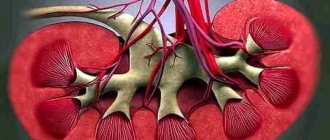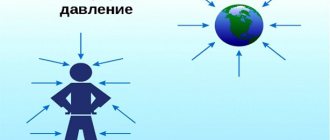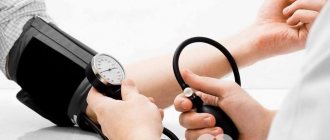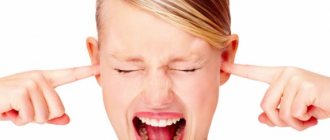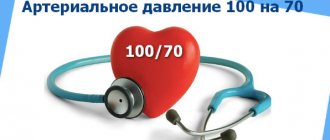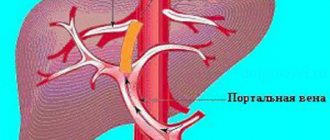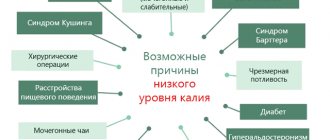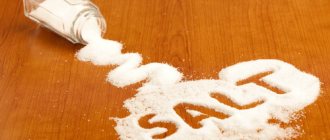Every adult should know what the numbers on the tonometer screen mean, because blood pressure is the main parameter characterizing the functioning of the heart and blood vessels. Knowing how to correctly interpret measurement results, you can prevent a huge number of complications and cure hypertension or hypotension at an early stage.
A pressure of 120 over 50 does not seem to be a significant deviation from the norm, but the difference between the upper and lower readings is considered critical.
What does blood pressure 120/50 mean?
Few people know what low blood pressure indicates.
Low diastolic pressure with normal upper blood pressure is the result of weak cardiac muscle tone. Due to loss of elasticity and blood vessels, blood circulates slowly, and internal organs receive less nutrients and oxygen. If the patient regularly exhibits a reading of 120 per 50 mm Hg. Art. he may be diagnosed with hypotension. This condition requires systematic monitoring.
A decrease in the lower limit of blood pressure to 50 units indicates that the heart cannot cope with pumping blood. The situation is dangerous because without timely correction, the risk of developing cardiac and vascular pathologies increases, and metabolism in the body may also be disrupted.
In the first stages of pregnancy, a decrease in diastolic pressure by 10-15 points is acceptable. Before birth, blood pressure will return to normal limits. If blood pressure is 120/50 mm Hg. Art. observed in a pregnant woman constantly, hospitalization is required. There is a possibility that the blood circulation of the fetus is disrupted, and therefore its oxygen supply.
A blood pressure of 120 over 50 is considered normal for diseases such as anemia, thyrotoxicosis, and atherosclerosis.
A short-term decrease in diastolic pressure to 50 units is observed in stressful situations and prolonged, intense mental activity.
Consequences
The pathology is life-threatening and if you do not consult a doctor in time, there is a possible risk of developing:
- Acute heart failure;
- Stroke, as well as myocardial infarction;
- Alzheimer's disease (disease of the central nervous system). Basically, the disease develops in an elderly person (over 60 years old);
- Due to constant fatigue, absent-mindedness and emotional distress, the patient’s quality of life is significantly reduced;
- Due to the fact that with this disease blood circulation is impaired, blood stagnation is possible.
Important! During pregnancy, blood pressure 130 over 50 is dangerous for the child, as there is a risk of developing fetal hypoxia.
Causes
Provoke a reading of 120/50 mmHg.
Art. There may be bradycardia, disruptions in the endocrine system and kidney function, and vitamin deficiency in the body. In a person who has been injured and lost a certain volume of blood, diastolic pressure may also decrease. A lower blood pressure reading of 50 is also observed with nosebleeds. Dehydration, which occurs after exhausting physical activity, diarrhea and improper use of diuretics, also causes blood pressure of 120 per 50 mm Hg. Art.
Sometimes this indicator is observed in people who have undergone surgery. During the recovery process, blood pressure stabilizes and therefore does not require correction.
Causes, symptoms and treatment of hypotension
Have you been struggling with HYPERTENSION for many years without success?
Head of the Institute: “You will be amazed at how easy it is to cure hypertension by taking it every day...
Read more "
Many people believe that only hypertension—high blood pressure—can threaten a person’s health. In fact, any deviation of systolic (upper) and diastolic (lower) pressure, including downward from the norm, is considered unfavorable. Hypotension occurs not only among people of retirement age, but also among young people. Why is low blood pressure dangerous, what are the causes and symptoms of its drop? To answer these questions, you need to consider the norms of upper and lower pressure for different age groups.
Normal indicators
People who care about their health are wondering what blood pressure is considered low.
Normal values fluctuate within 110/70 mmHg. Art. up to 130/85 mm Hg. Art. Thus, for men and women from 16 to 20 years old, a blood pressure of 100-120/70-80 mmHg is considered normal. Art. From 20 to 40 years – 120-130/70-80 mm Hg. Art. In people aged 40 years and older, normal levels should not exceed 150/90 mmHg. Art. Low blood pressure is considered to be 110-100/70-60 mmHg. Art. and below. Such indicators on a tonometer do not always indicate the development of hypotension. Thus, blood pressure decreases if a person does not eat enough or exercises intensively. You can notice this phenomenon after visiting a sauna or steam bath. The fact is that procedures that involve exposing the body to high temperatures contribute to the dilation of blood vessels, which causes the pressure in them to weaken.
Why is low blood pressure dangerous? In fact, a temporary decrease in the numbers on the tonometer is not considered dangerous. In a healthy person, the indicators quickly return to normal, but it happens that they permanently remain low. If systolic pressure is below 100 mm Hg. Art., and diastolic - below 60 mm Hg. Art., we are talking about hypotension.
Can this condition threaten your health? For young people, hypotension is not considered dangerous, although the person experiences discomfort as a result of this pathology. However, for people over 60 years of age, the prognosis of the disease becomes more complicated. Low blood pressure can cause:
- cerebral ischemia;
- loss of consciousness.
These life-threatening conditions are caused by obstruction of blood circulation due to excessive vasodilation and slowing of blood flow. Due to a lack of oxygen and nutrients, necrosis of some parts of the brain develops, which is why an ischemic stroke occurs. Brain hypoxia can also cause fainting.
Causes
Hypotension has 2 types of progression - acute and chronic.
An acute decrease in pressure occurs due to cardiac dysfunction, intoxication, drug overdose, injuries accompanied by blood loss, as well as allergic reactions. In such cases, the injured person needs emergency medical care, because reduced vascular tone leads to the development of hypoxia of organs and tissues, which can lead to irreversible consequences.
Chronic hypotension can be a manifestation of normality or pathology.
- The physiological form of hypotension occurs in people who play sports professionally, as well as in residents of high mountains. Low blood pressure is considered normal, since it does not harm human health. With physiological hypotension, a person feels normal.
- Young women and adolescents of asthenic physique are susceptible to hypotension. Women's blood pressure drops during menstruation and pregnancy. This phenomenon is associated with changes in hormone production and blood loss and is considered normal.
In other cases, low blood pressure is an indicator of pathological processes in the body.
If hypotension is considered as an independent phenomenon, then it will be called primary. However, often permanently low numbers on the tonometer are a consequence of some disease - in this case, the disease will be secondary. Among the reasons that provoke too low blood pressure are:
- Diseases of the endocrine system: diabetes mellitus and dysfunction of the adrenal glands.
- Osteocondritis of the spine.
- Heart defects.
- Cirrhosis of the liver.
- Ulcers of the stomach or duodenum.
- Vegetative-vascular dystonia of the hypotonic type.
- Heredity.
- Stress, overwork, lack of sleep.
- Poor nutrition.
In medicine, orthostatic hypotension is considered separately. Its essence lies in a drop in pressure with a sharp change in body position. In most cases, this condition occurs in adolescents. The causes of low blood pressure are a sudden disruption of blood circulation after a sudden change in position. Orthostatic hypotension occurs when waking up in the morning: after a person quickly gets out of bed, he notices darkening in his eyes, dizziness and nausea. After a few minutes the condition returns to normal.
Signs
If a person has constantly low blood pressure, the symptoms of this condition will be mild. Pathology can occur without any symptoms. But more often, hypotensive patients present with many complaints. People with hypotension often feel weak, drowsy (especially in the morning), irritability, and decreased ability to work.
Symptoms of low blood pressure:
- apathy;
- shortness of breath at rest, feeling of lack of air;
- dizziness;
- pain, feeling of heaviness in the head;
- memory problems;
- problems waking up in the morning;
- sweating;
- instability of emotions;
- increased sensitivity to light, sound and temperature changes;
- digestive problems;
- swelling of the limbs in the evening;
- weather dependence.
With low vascular pressure, a person has problems traveling in public transport, as this causes “sickness”: dizziness, shortness of breath, nausea and vomiting. In men, hypotension provokes problems with potency. If the pressure drops sharply, the person may lose consciousness.
You can determine the decrease in pressure at home if you have a tonometer. Indicators are measured at rest. Signs of low blood pressure should be a reason to consult a doctor.
Diagnosis and treatment
A neurologist and cardiologist usually examine and treat a person with symptoms of hypotension. Attention is paid to the patient's complaints, and the doctor also measures the pressure of the person who applied. If you cannot find out why the patient’s blood pressure is falling, you will need to consult other specialists.
Often, manifestations of hypotension do not require correction with medications. However, if problems with vascular tone arise against the background of other diseases, they should be treated first. Treatment for low blood pressure involves lifestyle changes. People with hypotension should follow a work-rest schedule. All hypotensive people need more hours of sleep.
Every day a person with hypotension should spend at least 40 minutes outside. You should not forget about moderate exercise, but you should remember that physical fatigue can further aggravate the problem. Swimming, Pilates, cycling and walking are suitable for hypotensive people, and morning exercises will be an excellent remedy for drowsiness. Helps eliminate hypotension and massage.
What to do with low blood pressure so that the problem does not affect your ability to work and your mood? If you have hypotension, you should eat right. When preparing a diet, attention is paid to simple and healthy foods: vegetables and fruits, nuts, whole grain cereals, cheese, dairy products and low-fat meat. Honey, beet juice, dark chocolate, spices and carrots normalize blood pressure.
Don’t forget about your drinking regime - you should drink at least 1.5 liters of water per day. Many are sure that coffee quickly saves you from low blood pressure. This drink really increases vascular tone, but you should only drink it in the morning. Even with hypotension, you should not drink more than 2 cups of coffee per day. It is unacceptable to compensate for a night's lack of sleep with this drink.
With low blood pressure, it is useful to harden yourself - take a contrast shower, douse yourself with cold water. Under such conditions, the vessels are strengthened and the tone of their walls increases.
Why do you feed pharmacies if hypertension is afraid of the usual like fire...
Tabakov has revealed a unique remedy against hypertension! To reduce blood pressure while preserving blood vessels, add to…
Limiting the influence of stress helps prevent the manifestations of hypotension.
It happens that lifestyle adjustments have not brought results, and a person continues to suffer from hypotension. What to do with low blood pressure in this case, and does a person need medication? Antihypertensive drugs help increase cardiac output and improve vascular tone. These include:
- Adrenergic agonists: medications to increase vascular tone. Metazon and Norepinephrine are used.
- Glycosides (Digoxin, Celanide, etc.): prescribed if hypotension occurs due to heart failure.
- Herbal preparations: products based on lemongrass, rosea radiola, ginseng, eleutherococcus and echinacea.
Medicines are taken according to the regimen prescribed by the doctor. Self-medication for hypotension, as with all other ailments, is not allowed.
If a person feels that his blood pressure has dropped, he should ventilate the room or go outside. If your health does not allow you to be in a standing position, you need to sit or lie down. To increase vascular tone, you can drink a cup of coffee, black tea or grape juice (you can add a few drops of ginseng tincture). Hypotonics, like hypertensives, should measure blood pressure daily and be observed by a doctor.
Symptoms
The most striking sign of a decrease in diastolic pressure is fatigue, drowsiness and a dull pain in the head. With a sudden change in body position, your vision may become dark and you may feel dizzy.
Patients experience a feeling of lack of air, nausea and tremors in the hands. This pressure is characterized by numbness of the limbs and pressing pain in the chest.
Neurosis phenomena are often added, such as irritability, rapid mood swings, depression, tearfulness and anxiety.
Treatment
Increased blood pressure leads to increased blood pressure readings. If it is not lowered in time, you may experience adverse health consequences that adversely affect the condition of the cardiovascular system and kidneys.
If a person does not know why his blood pressure readings suddenly rose, this does not mean that he should do nothing. In case of these violations, it is necessary to immediately take measures that will help stop surges in blood pressure.
After your general condition improves, it is advisable to visit a doctor to find out the cause of the ailment. This will allow you to avoid surges in blood pressure in the future and prevent repeated attacks of hypertension.
Most likely, the doctor will order a full examination to find the cause of the high blood pressure.
If a person has a tendency to hypertension, he should follow several important rules that help protect himself from the pathological process in the blood vessels. Required:
- Lead an active lifestyle if your health allows it;
- Make time for daily physical activity. You can even limit yourself to traditional exercises in the morning;
- If possible, go for evening walks;
- Avoid eating foods that have too much salt and spices added;
- Give up bad habits that have a negative impact on the state of the cardiovascular system.
Drug treatment for high blood pressure is selected by a specialist. He will prescribe a drug that lowers blood pressure. To increase the effectiveness of therapy, it is necessary to take several medications belonging to different groups.
At the very beginning of the development of hypertension, you can get by with traditional methods of treatment. With this diagnosis, various herbal decoctions that have a hypotensive effect will be useful. Products based on valerian and motherwort are especially useful. They eliminate general tension and have a positive effect on the endocrine system.
Decoctions of St. John's wort, oregano and sage cope well with the manifestations of hypertension. They are recommended to be taken for high blood pressure caused by kidney disease.
If a patient intends to be treated with herbs, he should initially discuss this issue with his doctor. If possible, he will select the most suitable folk remedies with a minimum number of side effects.
For headaches
Very often, headaches indicate an increase in blood pressure. If they are chronic, a doctor's help will be required. When you have a headache from jumps in blood pressure, you must first eliminate the cause of the ailment. At the same time, you can anesthetize the problem area using special medications and therapeutic procedures.
Pulse
When blood pressure is 120, heart rate decreases by 50. For middle-aged people, the norm at this pressure would be 65-70 beats per minute. In people of retirement age, the pulse can be 65-50 beats. If it drops to 50 regularly, you need to undergo a comprehensive examination.
Blood pressure of 120/50 and pulse of 50 can be observed if a person spends a long time in low temperatures. A cold environment causes your body temperature to drop and your heart rate to slow. The body thus saves strength, this is a kind of defensive reaction. As soon as the patient warms up, blood pressure and heart rate return to normal.
A drop in heart rate of up to 50 beats can be observed when reflex zones are stimulated. These areas are the eyeballs and the lower side of the neck. Sometimes a person stimulates them unconsciously. If you measure the pulse of a man who has tied his tie tightly or constantly rubs his eyes, his heart rate will be underestimated.
Classification of low pressure
The distinction is made as follows:
| Tonometer indicator | Definition |
| 100-120/60-80 | Considered normal. A kind of reference value. |
| 90/70 | Indicates a slight decrease in pressure. The so-called mild hypotension. |
| 70/60 | Moderate decrease in blood pressure. |
| 50-60 to 40 | Severe hypotension. Indicates serious health problems. |
Anything below is already a critical indicator.
A blood pressure of 60 over 40 means urgent medical attention is required. Such tonometer readings cannot be normal, even during pregnancy, when low tonometer readings with baracardia are typical.
What to do?
The first thing a person should do when they discover their blood pressure is 120 over 50 is to contact a specialist. This is necessary in order to diagnose serious pathologies at an early stage or identify other causes of a decrease in diastolic readings. At home, you can stabilize your lower blood pressure by raising your legs up and massaging the back of your neck. This will speed up blood flow to the heart. A contrast shower also normalizes blood circulation.
It is very difficult to increase the lower pressure without affecting the upper one. For these purposes, doctors develop a treatment regimen individually, taking into account the patient’s return and the reasons that provoked the disease. At home, you can use Eleutherococcus, Pantogam or Vasobral.
If you notice the numbers 120 to 50 on the tonometer, do not panic and do not rush to take pills in batches. Perhaps the reason lies in a malfunction of the device. Calm down and measure your blood pressure again, but do not clench your fists or hold your breath.
Traditional methods of treatment
Cinnamon and honey will help to quickly increase lower blood pressure. Brew half a teaspoon of cinnamon and a tablespoon of honey in 250 ml of water. Let the drink cool and drink in one gulp.
Lemon zest has a tonic effect. It can also be combined with honey and brewed over a fire or consumed raw.
Chopped chokeberry fruits are mixed with lemon zest and 1 teaspoon is consumed after meals. Onion decoction allows you to quickly normalize lower blood pressure. You need to peel the onion and chop it into pieces. Brew in boiling water for 20 minutes and then strain. The pulp is thrown away, and the liquid is drunk half a glass three times a day.
Do not try to raise your lower blood pressure with coffee or cognac. They will increase both the diastolic and systolic values, which can only worsen the patient’s condition.
What to do if blood pressure is 150 to 100 and how to lower it
In the modern world, hypertension occupies one of the leading places among cardiovascular diseases. And today, high blood pressure of 150 to 100 occurs even in young people, threatening not only health, but also life. That is why doctors are so concerned about this problem, and scientists are striving to find the most effective drug for hypertension.
- Causes of increased pressure
- What is the danger?
- Characteristic manifestations
- First aid
- Medications and alternative therapies
- Consequences and complications
- Forecast
- Pressure during pregnancy
Causes of increased pressure
Normal blood pressure is considered to be 120 to 80 mmHg. When these numbers rise to a level of 150 per 100 mm Hg, there is no longer any need to talk about the norm. With regular pressure surges to such figures, we are talking about hypertension, which many people have heard about today. It is diagnosed equally in men and women, and it becomes “younger” over the years.
Not every person thinks about what can lead to increased blood pressure and how to deal with it. But it is knowledge of the leading root causes of hypertension that can help to successfully cope with this disease. Thanks to numerous medical studies, a number of factors have been identified that lead to high blood pressure numbers.
Among the most common are the following:
- nervous tension and frequent stress;
- lack of proper nutrition;
- adverse environmental impacts;
- excess salt intake;
- smoking and alcohol abuse;
- sedentary lifestyle;
- excessive loads.
Don't forget about the hereditary factor.
If the mother or father has hypertension, the risk of its development in children increases many times over. Other reasons include various injuries, excess weight, diabetes, kidney pathology, thyroid disease, endocrine diseases and taking certain medications. High blood pressure numbers can be caused by tonometer errors that occur as a result of a malfunction of the device or incorrect implementation of the measurement procedure. This often happens when the position of the body or arm on which the tonometer cuff is located is incorrect. It is with the identification of all these factors that the diagnosis of hypertension begins, which should be dealt with exclusively by a doctor.
What is the danger?
Unfortunately, many people often do not understand why high blood pressure is dangerous. As a result, this leads to the progression of the disease to a severe stage and the development of serious consequences. Coping with them is often much more difficult than with hypertension. A stable increase in pressure over a long period of time, first of all, has an adverse effect on the heart, leading to an increase in its left side.
Characteristic manifestations
It is useful for every person to know the main manifestations of hypertension, which will help to promptly identify pathological changes and begin treatment. If you experience the following symptoms, you should consult your doctor immediately:
- frequent headaches;
- sweating and redness of the face;
- feeling of rapid heartbeat, pulsation in the head;
- flashing “flies” or black dots before the eyes;
- dizziness;
- the appearance of swelling under the eyes;
- feeling of numbness in fingers.
First aid
When the pressure has risen to high numbers (150 to 100 mm Hg and above), it is necessary to follow a certain first aid algorithm that will allow you to avoid the dangerous consequences of this disease:
- eliminate any physical and emotional stress;
- take a comfortable position;
- put a cold compress on the forehead and mustard plasters on the feet (put the feet in a basin of warm water);
- take pills that lower blood pressure (captopril, nifedipine);
- measure pressure every 20-30 minutes;
- If chest pain occurs, take nitroglycerin.
If fear or anxiety appears, you can take a mild sedative in the form of valerian or motherwort. Valocordin or Corvalol will also help. If the above remedies do not help, you should immediately call an ambulance.
Medications and alternative therapies
Hypertension belongs to the category of diseases that require long-term and complex therapy. The following groups of medications help reduce high blood pressure:
- ACE inhibitors: have a vasodilating effect and are optimal drugs for people with diabetes or heart failure (captopril, enalapril).
- Adrenergic blockers (β-group): they are the drugs of choice in the presence of a history of tachycardia, reducing the pulse rate and not causing addiction (bisoprolol, egilok).
- Diuretics (diuretics): help remove excess water and salt from the body, stimulating kidney function and helping reduce blood pressure (Lasix).
- Calcium channel blockers: effectively stimulate coronary circulation and promote dilation of peripheral blood vessels (cordaflex, corinfar).
If necessary, you can combine these medications with each other, but strictly as prescribed by your doctor. They should be taken preferably in the morning. Some alternative methods can also help in therapy.
- Acupuncture massage. Often the main manifestation of hypertension is a severe headache. Massaging certain acupuncture points will help get rid of it. For example, in the corner of the lower jaw behind the ear or in the area of the parietal fossa. This will help relieve vascular spasm and reduce blood pressure.
- Proper nutrition. For hypertension, it is of no small importance and includes a number of specific dietary principles. Salt, pickled, smoked products, and animal fats are excluded. You should eat more vegetables, dairy products and fruits.
Giving up bad habits, avoiding stressful situations and physical activity will help you get rid of hypertension.
Consequences and complications
In the absence of competent treatment for hypertension, there is a real threat of developing various complications in the form of:
- myocardial infarction;
- ischemic or hemorrhagic stroke;
- pathological changes in the kidneys;
- aortic aneurysm.
Each of these complications is a serious threat to life. That is why doctors strongly advise all their patients to monitor their blood pressure and take pills to lower it.
Forecast
With proper therapy and compliance with all recommendations of the attending physician, the prognosis for hypertension is almost always favorable. If the cause of high blood pressure is identified and eliminated, the disease can be completely overcome. In cases where it is not possible to identify the leading factor of the disease, you have to take medications throughout your life.
But even in this case, we can talk about a favorable prognosis, since the quality of life practically does not suffer and remains at a very decent level. And you also need to understand that the patient himself with hypertension can significantly affect this prognosis. To do this, it is enough to lead a healthy lifestyle, get rid of bad habits and be sure to monitor your blood pressure numbers.
Prevention
Hardening and morning exercises will help prevent a decrease in diastolic blood pressure. Spend more time in the fresh air, give up exhausting physical and mental work. Avoid conflict and stressful situations. Sleep should last at least 8 hours.
Review your daily menu. There are no special diets that can normalize diastolic pressure. Although there are products that can affect this indicator. People with a blood pressure of 120 over 50 are recommended to eat boiled potatoes, nuts, dark chocolate, low-fat fish, liver and onions. It is forbidden to eat garlic, spinach, beans and beans. Don’t forget to eat vitamin-containing foods; sometimes it’s the lack of vitamins that causes blood pressure of 120 to 50.
Do not be afraid to consult a doctor, even if you have no characteristic symptoms with a pressure of 120 over 50. There is no shame in striving to be healthy. It’s better to be convinced for the tenth time that the heart and blood vessels are functioning properly than to miss the moment when you can still fix everything and face irreversible changes in the body.
Why is the pressure 120 over 40?
This indicator can provide information about the level of oxygen supply to organ cells in the human body.
Depending on age and the presence of diseases, data may change throughout the day. There are two types of values - systolic and diastolic. Systolic is the moment of blood pressure in the arteries during the contraction of the heart, and diastole is measured at the moment of its relaxation.
When measured with a tonometer, the upper (systolic) pressure is always greater than the diastolic pressure. Systole is the very moment of contraction of the heart muscle. This indicator is measured in millimeters of mercury. Any significant jumps in values should be alarming, because both a decrease and an increase in indicators:
- have a detrimental effect on blood vessels and the condition of all organs;
- contribute to accelerated aging of the body.
